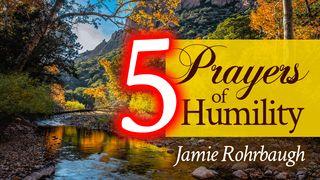Информација за планот
Life Under the Sun: The Unexpectedly Good News of EcclesiastesПримерок

As we continue studying the introduction to Ecclesiastes, we’re picking up the paradigms and categories we need to understand the rest of the book. Today, we’ll look at the role nature plays in our search for wisdom about life “under the sun.”
After introducing the central question of Ecclesiastes, “What does a person gain for all his efforts that he labors at under the sun?” the text moves to focus on the created world, showing the difference between our temporary human existence and the earth’s seeming timelessness. Curiously, these natural cycles predict the shape of Ecclesiastes. If you read through the book, it will feel like certain themes or topics are repeating themselves.
Structuring ideas this way is unusual for us modern readers because we tend to organize our thoughts from point to point, eventually arriving at a conclusion. But this circular structure reinforces Ecclesiastes's underlying message about the shape of life under the sun: Life does not progress neatly from point to point so much as it spins and cycles. We do not get to choose when we encounter different questions, and so too, the answers we need are often embedded within our problems themselves.
The majority of the Teacher’s observations and conclusions come from what theologians call “general revelation.” General revelation describes those things we can know about God by watching the world around us—things we observe from nature and human reasoning.
Ultimately, general revelation and specific revelation are designed to work together like two hands or two eyes; and because they come from the same source, they reveal the same things about God even if they do it in different ways.
During Jesus’s earthly ministry, He often used nature and botanical imagery to explain the realities of the kingdom of heaven. He did this in part because His immediate audience lived in an agrarian setting. But He also used natural imagery because general revelation is open and available to the masses. By using these widely-understandable images and categories, He was able to move people from general knowledge about God to specific truth.
Today, the average westerner does not live close to the earth and is less familiar with natural rhythms and patterns. But the power of general revelation is still the same. The One who made the sun is the One who governs all our weary days under it.
Read Ecclesiastes 1:4-7, and read Romans 1:19-20. Also read Hebrews 1:1-3. Ask yourself: How do the cycles and seasons of nature give us insight on the cycles and seasons of our own lives?
Опис за овој план

In this five-day reading plan from Hannah Anderson, consider the wisdom of Ecclesiastes afresh as you search for a solid foundation for life under the sun. Discover how Ecclesiastes is more than self-help or good advice—...
More
Слични Планови

Твојата најдобра инвестиција!

Отстапи го на Бога првото место

Библија за деца

Живеј живот со цел!

Што е вистинска љубов?

Ти имаш молитва!

Пет молитви на понизност

доверба - да веруваш на тоа што бог го кажува во неговото слово и да живееш во согласност со тоа божјо слово

Живеј со сила и храброст!
